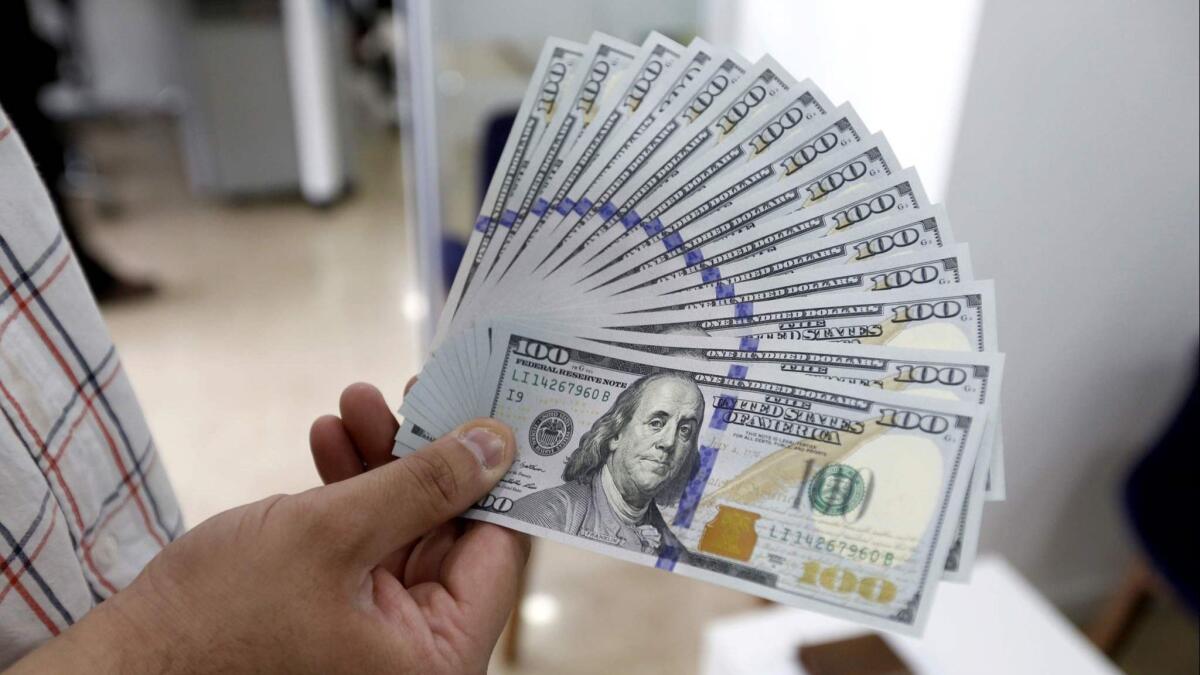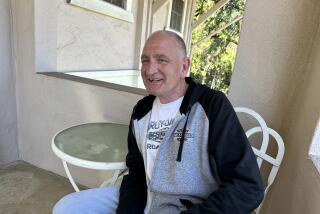To get smokers to quit, money works better than electronic cigarettes

- Share via
When it comes to helping smokers quit, financial rewards are much more effective than electronic cigarettes.
But the sad truth is that nothing works all that well, according to the results of a large clinical trial that tested five smoking-cessation strategies in real-world conditions.
Out of 6,006 smokers who enrolled in the trial, only 80 could provide biochemical evidence that they were smoke-free six months after their quit dates. That’s a success rate of just 1.3%.
Even if you count only the 1,191 people who put some visible effort into trying to kick the habit, the success rate was still just 6.7%.
The results were published Wednesday by the New England Journal of Medicine.
“The quit rates that are likely to be achieved with workplace smoking-cessation programs were lower than would be surmised on the basis of previous workplace studies,” the study authors concluded.
The researchers, led by Dr. Scott Halpern of the University of Pennsylvania, invited employees of 54 companies and their spouses to enroll in the trial if they were current smokers. The companies represented a range of industries, including education, manufacturing and construction, finance and insurance, and biotechnology. All of them used the same suite of wellness programs.
A total of 125 people declined to participate in the trial. The rest were randomly assigned to one of these five groups:
Usual care: Smokers in this group were offered information about the health benefits of quitting, strategies to boost their odds of success and access to a text messaging service run by the National Cancer Institute that sends advice and encouragement to subscribers’ phones.
Free smoking-cessation aids: In addition to usual care, people in this group received free supplies of nicotine patches, gum and lozenges, along with medications such as Chantix (varenicline) and Zyban (bupropion). If none of those worked, they also could receive free access to NJOY electronic cigarette systems. (NJOY donated its products to the researchers for use in the trial, but the company had no other role in the study, the authors wrote.)
Free e-cigarettes: These people were offered NJOY e-cigarette systems at no cost, regardless of whether they had previously used more traditional smoking-cessation aids. They also received usual care.
Financial rewards: Smokers in this group got usual care, free smoking-cessation products (including e-cigarettes) and a promise of cash if they could prove they were smoke-free with a urine or blood test. They could earn $100 if they lasted one month, $200 more if they made it to three months and finally $300 if they were smoke-free at six months.
Redeemable deposit: This group was offered the same resources as those in the financial rewards group, but with a twist. They started out with a $600 deposit account and were told they could redeem their funds as the trial went along if they met their non-smoking goals. This was designed to test whether the human instinct to avoid a loss could provide an additional incentive to help them quit.
It’s not clear how many of the 6,006 smokers in the study even tried to quit. More than 80% of them didn’t log into the clinical trial’s website once over the six-month period.
But among those who did, some of the strategies worked better than others, researchers found.
Only one person (representing 0.7% of his or her group) quit smoking through usual care alone. So did eight (or 2.9%) of the people in the group that got free smoking-cessation products and 12 (or 4.8%) of those in the group that got instant access to e-cigarettes.
Nearly three-quarters of the success stories came from the groups that got cash for quitting. A total of 24 people (or 9.5%) in the regular financial rewards group were smoke-free at six months, as were 35 (or 12.7%) of those in the redeemable deposit group.
In head-to-head comparisons of the different methods, researchers found that redeemable deposits were nearly five times more effective than offering free smoking-cessation aids. They also were nearly three times more effective than offering those aids along with immediate access to free e-cigarettes.
In addition, the regular financial rewards were about 3.5 times more effective than offering free smoking-cessation aids.
Although the quit rate was higher for smokers in the redeemable deposit group than in the financial rewards group, the difference wasn’t large enough to be considered statistically significant, according to the study.
The same patterns were seen in the full group of smokers, the researchers wrote.
Offering straight-up cash to get people to quit smoking may sound expensive, but it was actually more cost-effective than some of the alternatives.
The redeemable deposit plan cost $3,461.47 per successful quitter, and the financial rewards plan cost $3,623.13 per successful quitter, according to the study. For the sake of comparison, each quitter in the free e-cigarette group incurred $5,416.33 in costs, and those in the group offered free smoking-cessation aids priced out at $7,797.52 apiece.
If staying smoke-free for six months was hard, lasting a full year was even harder. Only 38 people could produce biochemical proof that they were not smoking a year after their quit date. That’s less than half of the 80 who made it to the six-month mark.
Still, Halpern and his colleagues argued that the cash-for-quitting plans might make sense for companies that offer health insurance to workers who smoke.
“Most costs are incurred only if employees successfully quit, and the overall costs are favorable in comparison with the extra costs of employing smokers,” they wrote.
The study was funded by the Vitality Institute, which runs the wellness programs used by the 54 participating companies.
Follow me on Twitter @LATkarenkaplan and “like” Los Angeles Times Science & Health on Facebook.
MORE IN SCIENCE
By getting serious about limiting global warming, the world could save itself more than $20 trillion
Can simulating evolution on a computer explain our enormous brains?
Researchers tally the physical and financial costs of opioid painkillers’ side effects







